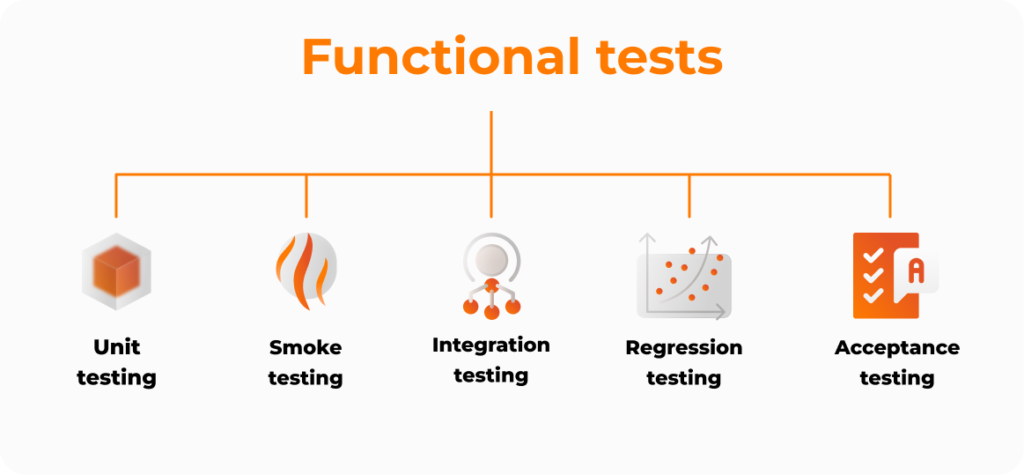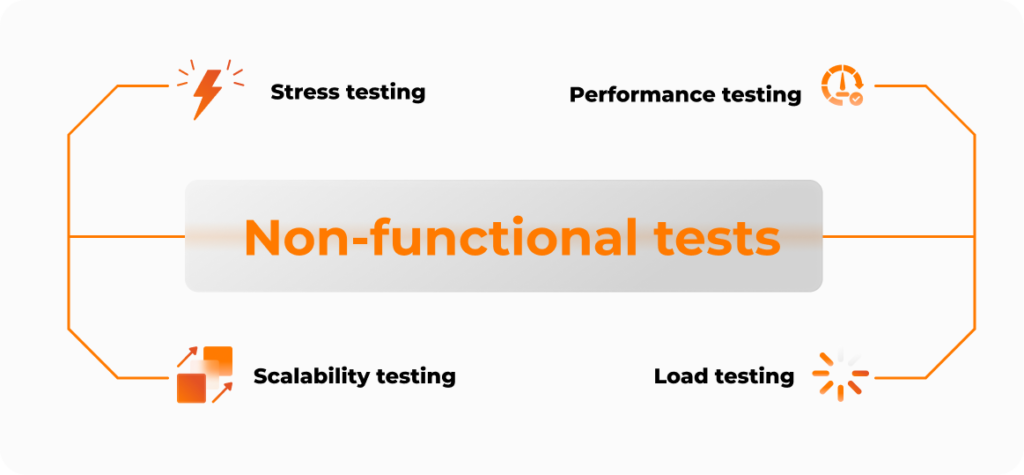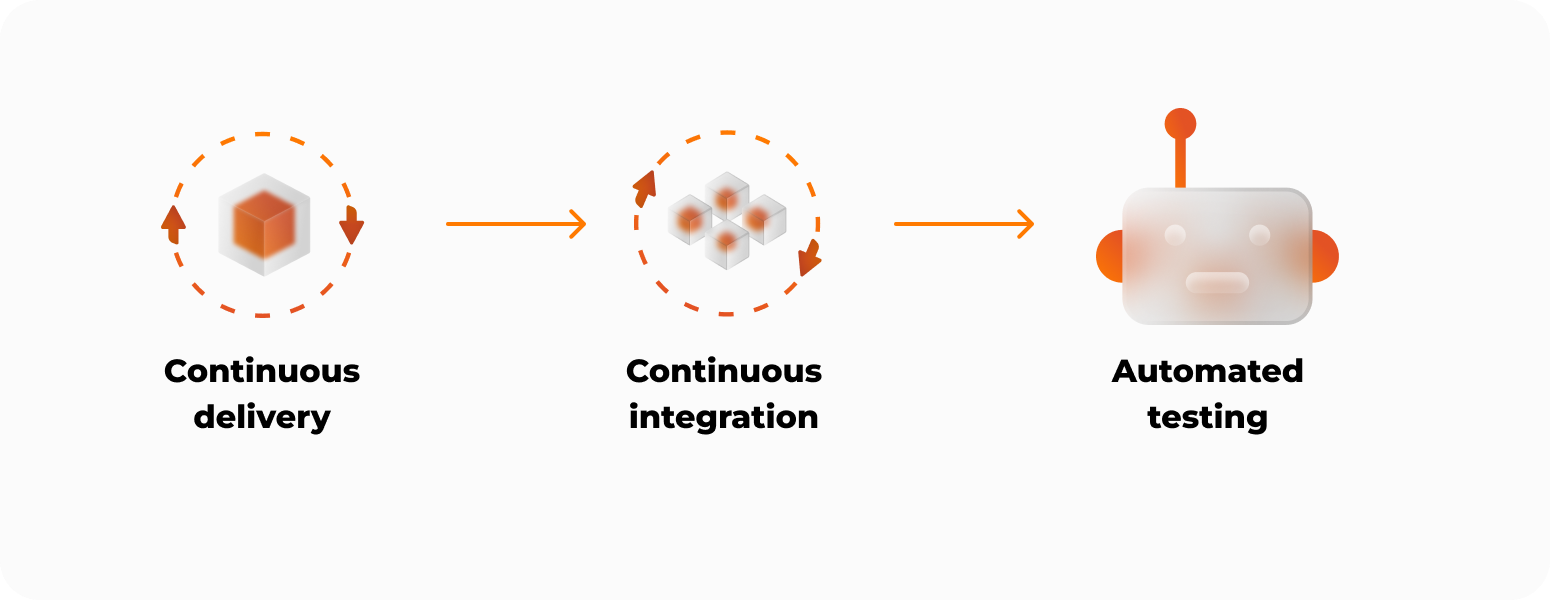What is automated testing?
Automated testing relies on programming languages, specialized frameworks like Selenium or Cypress, or no-code and low-code tools to develop software tests and can also manage test data and analyze results more efficiently, ultimately enhancing the software quality assurance process.
Why test automation is important
In agile development environments, automated testing is a crucial strategy for accelerating feedback, increasing test coverage, and improving test quality. Its primary objectives are to speed up test execution cycles, reduce manual efforts, and secure a robust and dependable software creation process.
Why automation testing is better than manual QA for most projects
Manual testing involves step-by-step checks performed by QA teams according to test plans that are custom-tailored to specific products. Following meticulous checklists, they validate the expected behavior of product features. With each new update or change, QA specialists manually execute tests, relaying the results to the engineering team for review and subsequent issue resolution.
As projects grow, manual testing tends to become exceedingly repetitive, time-consuming, and labor-intensive, which makes it costly and prone to human error. Automated testing addresses these challenges via autonomous execution of test cases through predefined scripts that simulate user actions and evaluate system responses. It is particularly effective for repetitive and time-consuming tasks, allowing QA teams to focus on more strategic aspects of the software development process.
The benefits of automated testing

Faster, more precise feedback
Automated testing provides rapid and precise feedback to development teams by swiftly executing test cases. The immediate identification of issues allows for quick bug resolution, facilitating agile development cycles. The added efficiency ensures that potential problems are caught early in the process, enabling teams to deliver high-quality code faster.
Higher test coverage
With the bulk of the tester’s effort going into writing new tests, automation enables a significantly higher coverage than manual QA. As a result, automated testing offers a more comprehensive evaluation of the application under test. Automated tests can handle a diverse range of scenarios, reducing the chance of undiscovered defects.
Lower long-term costs
While the initial investment in automated testing might seem substantial, the long-term cost benefits are undeniable. Automated tests run consistently without the need for ongoing manual effort, eliminating the recurring labor costs associated with manual testing. Moreover, the early detection of defects reduces the expenses incurred in fixing issues during later stages of development.
Time-saving through faster test runs
Automated tests run at a pace incomparable to manual testing, accelerating the overall testing phase. This time-saving aspect tends to accumulate over time, boosting productivity. Additionally, automation empowers the software engineering teams to channel their resources into more complex and critical aspects of product development, enhancing overall efficiency.
Reusability
Once scripts are created for specific functionalities, they become valuable assets that can be employed across various iterations, releases, or even different projects. QA teams can build upon previously validated components, streamlining the testing process and fostering a more efficient and sustainable development lifecycle.
Better scalability
The ability to handle an increased volume of test cases or adapt to changes in the application architecture is a distinct advantage of automated testing. Done right, automated tests remain stable, efficient, and effective even as projects grow. For organizations dealing with large-scale projects, automated testing is effectively the only viable QA solution that seamlessly accommodates ever-expanding feature sets without exponential increases in time or resources.
Lower probability of human error
Automation eliminates the human factor during test runs, minimizing the chances of introducing errors during the testing phase. The enhanced accuracy not only delivers more dependable results but also instills confidence in the overall quality of the software. Reducing human error through automated testing becomes a critical success factor in mission-critical systems or projects where accuracy is paramount.
Integration with CI/CD and DevOps
When integrating automated tests into the CI/CD process, code changes trigger immediate and systematic testing, ensuring rapid feedback on potential issues. As a result, automated testing aligns with the core principles of DevOps, allowing for the continuous and automated validation of code quality throughout the development lifecycle. The result is a streamlined delivery pipeline where the identification of defects is swift, precise, and reliable.
Experience the benefits of automated testing, with the additional advantage of saving 50% on tech talent. Engage nearshore AQA experts.
Types of automated tests
Automated tests fall into two broad categories depending on whether they focus on project requirements or other product properties and capabilities. These two categories are functional and non-functional testing.
Functional tests
Functional testing centers on verifying that the software works according to its requirements and specifications but is not concerned with system performance or other properties that are not critical to basic functionality.

Unit testing
- Verifies individual methods and functions within classes, components, or modules.
- Focuses on low-level, source-code proximity for cost-effective automation.
- Executed swiftly by a continuous integration server.
Smoke testing
- Conducts preliminary assessments to identify critical issues.
- Ensures that basic functionalities work before further testing.
- Is useful post-deployment to ensure proper system functionality in the newly deployed environment.
Integration testing
- Validates the interaction of distinct application modules or services.
- Examples: database interactions and microservices integration.
- Higher cost and complexity due to the coverage of multiple application systems.
Regression testing
- Detects unintended side effects from code modifications.
- Safeguards against the introduction of new defects.
Acceptance testing
- Formally validates system alignment with business requirements.
- Requires the entire application to be operational during testing.
- Focuses on replicating user behaviors and assessing system performance.
Non-functional tests
Non-functional testing focuses on performance, usability, dependability, and other non-functional parameters that impact end-user experience.

Performance testing
- Evaluates system performance under specific workloads.
- Measures reliability, speed, scalability, and responsiveness.
- Explores response times and system behavior with varying data loads.
- Identifies bottlenecks and ensures compliance with performance requirements.
Load testing
- Assesses the system’s response under expected load conditions.
- Checks if the software can handle anticipated user loads effectively.
Stress testing
- Evaluates the system’s resilience under extreme conditions.
- Identifies breaking points and assesses system behavior beyond normal capacity.
Scalability testing
- Gauges the system’s ability to handle increased
- Assesses performance as the system scales.workload or growing user base.
Transforming the role of QA
Automation fosters a partial shift in software quality ownership towards the engineering team, as test plans are integrated into the feature development roadmap and executed automatically through continuous integration solutions. Consequently, automated testing promotes leaner QA team sizes. It also empowers QA experts to concentrate on more critical features and encourages collaboration with developers. Automation-focused teams also prioritize skill enhancement in automation frameworks and tools, as well as adaptation to Agile and DevOps practices.
DevOps and test automation
Key aspects of DevOps and test automation integration include:
Continuous Testing: QA teams can seamlessly incorporate automated test suites into the continuous integration (CI) and continuous delivery (CD) pipelines, ensuring thorough testing of code changes at every stage of the deployment process. This approach enables early detection of defects, promotes faster feedback cycles, and enhances overall software quality.
Infrastructure as Code (IaC): By embracing the concept of infrastructure as code (IaC), QA automation extends beyond application testing to encompass infrastructure validation. Automated tests verify the correctness and stability of infrastructure configurations, ensuring consistency and reliability across environments.
Shift-Left Testing: Test automation facilitates the shift-left approach to testing, where testing activities are initiated earlier in the development lifecycle. By integrating testing into the development process from the outset, teams can identify and address defects more effectively, reducing the likelihood of costly rework and delays later in the cycle.
Continuous Improvement: Test automation metrics and insights provide valuable feedback for identifying bottlenecks, optimizing testing processes, and driving ongoing enhancements to the software delivery pipeline.
The integration of test automation within DevOps practices enables organizations to achieve greater agility, efficiency, and resilience in their software development endeavors.

Test automation best practices: select the right strategy for your goals
Don’t underestimate the importance of planning
Not having a defined plan and test automation strategy can result in the delayed identification and resolution of software issues, which may lead to further problems in the development cycle. The process of automated testing should include the following steps:
- Define the scope of automation
- Choose the right automation tool
- Prepare test data
- Design & execute test cases
- Maintain and update tests
- Monitor and report results
By following these steps and maintaining a proactive approach to planning and follow-up, teams can mitigate risks, improve testing efficiency, and ensure the successful execution of automation testing initiatives.
Select the right tools
Companies can choose from a slew of automated testing tools for web applications, mobile apps, and enterprise solutions. Automation testing tools of this kind facilitate the seamless creation, execution, and maintenance of tests while offering a centralized hub for analyzing test results and extracting actionable insights. Here’s what to consider when choosing an automated testing tool:
Covered platforms: ensure the automated testing tool supports diverse hardware, software, mobile, and desktop environments for comprehensive testing across operating systems and devices.
Programming languages support: consider the compatibility of automation tools with programming languages such as Java, JavaScript, Python, etc., aligning with the expertise of your team.
Robust reporting mechanism: effective reporting ensures prompt notification of test failures and provides comprehensive reports with detailed steps and visuals, enabling effective collaboration and informed decision-making among stakeholders.
Test early and often
Integrating automated testing early into the CI/CD pipeline enables developers to identify issues early in the process. By automating the execution of tests whenever new code gets added, teams can catch bugs sooner and prevent them from escalating into larger issues.
Use cloud testing
Cloud testing provides access to a wide range of resources for various testing scenarios, like simulating high-traffic situations, which helps in identifying potential issues and assessing real-world performance. Additionally, it offers flexibility to testers by removing the need for expensive hardware or software investments. This flexibility allows for simulating different environments, including various operating systems, devices, and network configurations.
Promote collaboration between development and testing teams
Cross-functional collaboration is central to software engineering teams and their ability to take ownership of both product development and testing. As a result, it is crucial that product managers and tech leads proactively encourage communication and prevent silos between development and testing teams. By working together from the project’s inception, developers and testers can align their priorities, building quality into the product from the start.
Leverage data-driven testing
Data-driven testing streamlines testing processes by allowing testers to utilize multiple data sets without the need for individual tests for each set, thus saving time and enhancing efficiency. By keeping data separate from test scripts and executing the same scripts with different data combinations, data-driven testing ensures efficient test execution and result generation.
Conclusion
Automated testing is fundamental to software development, offering high efficiency, reliability, and adaptability. As an integral component of agile and DevOps methodologies, automated testing seamlessly integrates QA into development pipelines. With this in mind, automated testing is not just a good practice — it’s fundamental to ensuring that organizations navigate software engineering with precision and efficiency.
AgileEngine’s dedicated Quality Studio has helped numerous companies, including Fortune 500 and Deloitte Technology Fast 50 brands, reach 90% test coverage, ensuring 30% faster time-to-market. Explore our test automation services and expertise, and get a free consultation.
Stay on top of the game with custom mobile app solutions.




